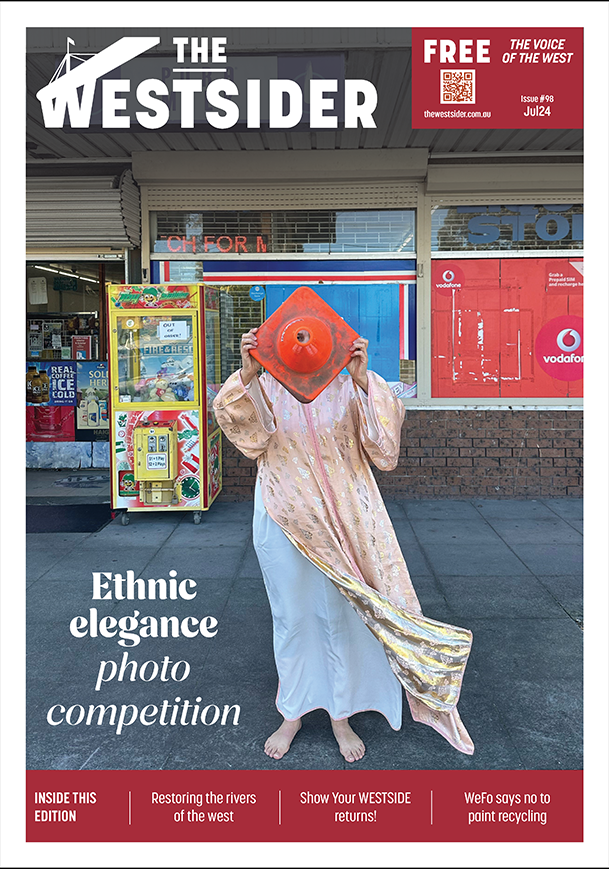By Kate Habgood
For many inner west residents, Braybrook is a pariah suburb. “Victoria’s Bronx”, a 2015 headline stated, “where every second house was dealing drugs.” It is one of Victoria’s ten most disadvantaged suburbs.
Braybrook has even, until recently, been doggedly resistant to the gentrification spreading through inner Melbourne. But the spike in house prices combined with neo-liberal public housing policy are having a transformative effect on the area, one that is detrimental to the existing residents. They are being pushed out to Tarneit, Melton, Sunbury, away from friends, family, public transport and community services. It’s a pretty tribal place, in a good way, a little bit like the villages of old England. For a lot of people, you grow up in Braybrook, you work in Braybrook, you stay in Braybrook.
Now a modest size, Braybrook actually used to be the name of the Shire that covered half of the western suburbs. An undated, unsourced early map shows plans for tiny blocks of six by nine metres, presumably to settle failed gold diggers. No surprise that idea didn’t get taken up.
Aerial photographs from 1945 show Sunshine and West Footscray solidly peppered with neat rows of housing. South of Ballarat Road is mostly paddocks, apart from the little Munitions Workers’ estate built in 1942. By the river was the famous ‘noxious trades’, manufacturing glue, tennis gut, sausage skin and soap. Today’s prominent Buddhist monastery on the clifftop was once F. Watkins’ Boiling Down Works, presumably to make good use of the left-over bits from their Piggery, which was slap bang on today’s Community Hub. Below South Road was the large RAAF Stores Base. Despite Central West Shopping Centre’s Vampire jet, there were no actual aeroplanes on site. Apart from that, around two dozen little houses were scattered, with solidly Anglo-Celtic residents: Burgess, Blackmore, Middleton, Cox. The only hint of multiculturalism was the Maltese living in a shack off South Road. The directory worker didn’t get their name.
At that time, public housing was a social democratic ideal of state governments. Parts of suburbs like Kensington and Footscray were ‘unfit for habitation’, leading to the controversial slum clearance programs. The War had halted most of the domestic building industry. Afterwards, there was a dreadful shortage, with many married couples having to shack up with in laws for years on end. The Housing Commission bought the land cheaply and laid out a model suburb. Braybrook-Maidstone would become their second largest development after Heidelberg. They fiddled with the existing grid layout, curving streets, retaining some, moving others. This would be a garden city suburb. Workers would raise chickens and grow vegetables. Their children’s respiratory problems would disappear in the fresh, clean houses.
By 1954, there were 2,000 public houses. The vertical clad timber kit houses below South Road were built in Britain for Operation Snail, which recruited UK railway workers with their families. The rest were Housing Commission. Two-thirds were the pre-fab concrete houses. They began cracking almost immediately on the black clay, with some residents even having a view outside through them. Most of the remaining were Australian-designed timber kit homes, built in France.
The Housing Commission’s preference for housing large families put unique pressures on the suburb’s infrastructure. Most state classrooms in the early years held around 60 kids each. Long-term residents remember a close-knit community. You recognised everyone’s face even if you didn’t know their name. Every year, one of the factories would put on a Christmas party for Braybrook Primary, a small recompense for their belching smells. It was always obvious, they say, when ETA was making peanut butter. The factories would recruit straight from high schools. Almost everyone had a job in those days. Despite that, it was difficult to budget with a large family. A lot of housewives preferred the Churchill Avenue shops as they could get groceries on tick until payday. That strip had everything: butcher, baker, greengrocer, even a haberdasher. A highlight of the year was Bonfire Night. Children would gradually build the heap, and everyone would gather to see the giant pile alight.

As the years passed and the White Australia Policy diminished, Braybrook’s cheap housing and its proximity to Maribyrnong’s Midway Hostel contributed to its multicultural character today. A new generation of families were enchanted by large blocks and spacious houses. Today, those blocks are a magnet for developers. One day soon, perhaps, a concrete house with its distinctive circles on the porch wall will be an unusual sight on a Braybrook street.
Kate Habgood recently hosted a conversation about the history of Braybrook at the Braybrook Library. She is a history writer, researcher and teacher.

